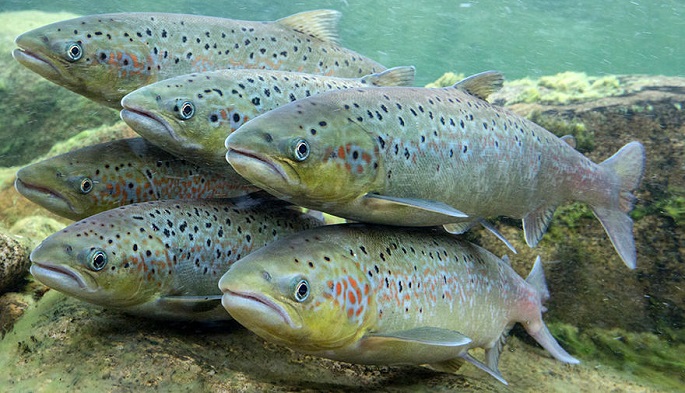Size shrinkage of salmons triggered by gene
Published : 15 Nov 2018, 03:26
Updated : 15 Nov 2018, 10:57
The gene version that tells salmon to mature at a later age and thus grow bigger is becoming less common, while the version that urges them to hurry up and get on with it is getting more prevalent, found a study.
A report on the study conducted by scientists at the University of Helsinki in cooperation with the Natural Resources Institute Finland and the University of Turku was published in the November issue of the journal Nature Ecology and Evolution as a cover story, said a press release issued by the Helsinki University.
Male salmons are maturing earlier and becoming smaller, and it shows in their genes. This was the discovery of the study that examined scale samples from salmon in the River Teno in northern Finland over a 40-year period. The study looked at the population genetic profile of a gene that determines salmon’s age of maturity and size.
The results show that the ‘big salmon gene version’ has become rarer in the population over time replaced by the ‘small salmon gene version’.
Previous work by the research consortium has shown that the age at which salmon mature is getting younger, and consequently also the size of salmon that are spawning is getting smaller. They also identified a single gene Vgll3 that has a large influence on determining the age at which salmon reach sexual maturity. They identified two forms or alleles of the gene that appear to signal to the salmon to either mature later at a larger size or mature earlier at a smaller size. The later salmon mature the bigger they grow.
“We knew from our earlier research that the age at maturity had been decreasing over this period. Now we wanted to see if there were signs of this also at the genetic level, that is, whether it was an evolutionary change,” said Professor Craig Primmer from the Faculty of Biological and Environmental Sciences at the University of Helsinki
“Basically, if we see that ‘salmon are shrinking’ we can’t be sure if it is evolution. For that, we need to know there are also changes in their genes. Now we also have that information, and we can say that we can demonstrate ‘evolution in action’.”
The change in genes indicates that the decrease in size is not just a ‘plastic’ or a temporary change brought on by other factors that do not necessarily require changes in gene sequences, such as changes in hormone levels. Instead, the change has an evolutionary basis. Being big is not as much of an advantage to salmon as it used to be, and the salmon are adapting to this new reality.
“This is another example de-bunking the myth that evolution takes millions of years,” said the first author of the study report, Yann Czorlich from the Natural Resources Institute Finland and the University of Turku.
The scale samples used for the study came from a long-term scale archive maintained by the Natural Resources Institute Finland. The archive keeps samples from more than 150,000 salmon individuals collected by volunteer fishermen since the 1970’s from the River Teno, one of the most prolific salmon rivers in Europe. The scales were then used to determine the age structure of the salmon population. They were also the source of DNA for genetic analysis.


